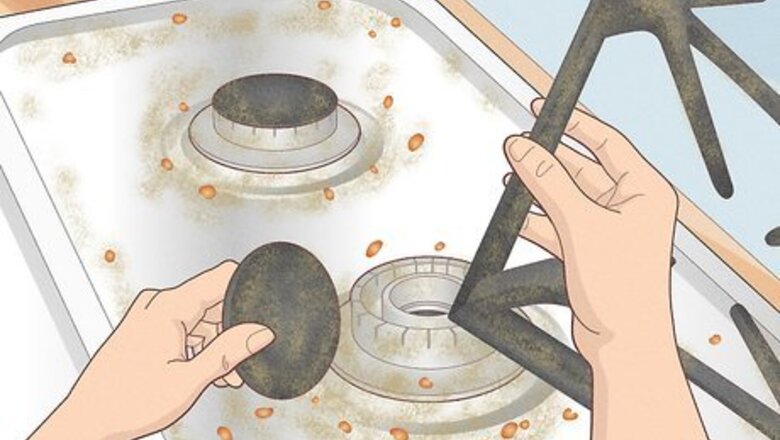
views
- Remove the grates, burner caps, and burners from your stove and soak them in soapy water for 10–15 minutes. Scrub the loose residue off with a sponge or brush.
- Wipe the stovetop with soapy water and a clean cloth to remove surface grease. Try using a baking soda paste, degreaser, or mesh pad to remove stuck-on food.
- Rinse and dry your stovetop, grates, burner caps, and burners before putting the pieces back. Wipe your stove after each use and clean it weekly to keep it maintained.
Cleaning the Gas Stove
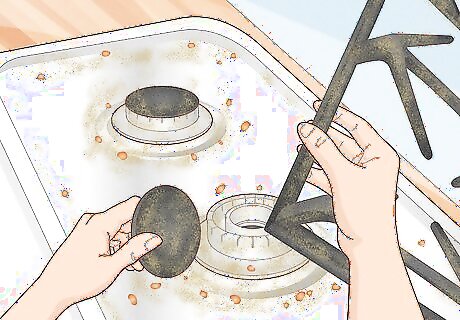
Remove the grates, burner caps, and burner heads from the stovetop. If you just used your stovetop, wait for the grates and burners to cool down completely. Then, simply lift the grates off of the stove to remove them. The burner caps are the circular covers on top of the burners, and they lift up easily so you’re able to remove and clean them. Then, try lifting the burner heads straight off the stove to expose the burner port underneath. Some models of gas stoves have sealed burner heads that are attached to the cooktop. Leave the burners on the stove and avoid trying to force them off so you don’t risk damaging them.
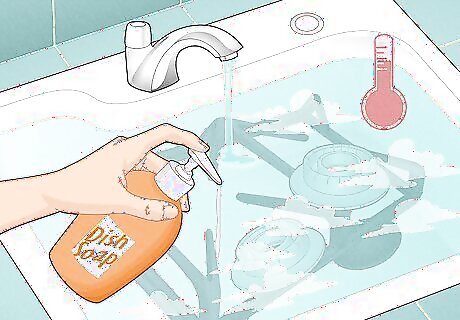
Soak the grates and burners in soapy water for 10–15 minutes. Place the grates, burner caps, and burner heads into a sink and fill it up with warm water. Add a few pumps of dish soap to the water and mix it together so it forms suds. Leave the grates and burners to soak in your sink for about 10–15 minutes to help loosen grease and old food that’s stuck on the surface. For a stronger soaking solution, use a mix that’s half water and half distilled white vinegar to break apart even more of the residue. If your sink isn’t big enough for the grates, then use a large tub or bucket instead. While the grates and burners soak, take advantage of the time by cleaning the cooktop on your gas stove.
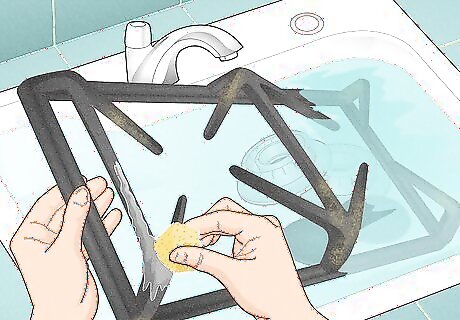
Scrub the pieces, then rinse and dry them. Use a non-abrasive sponge or a cleaning brush to break apart any residue that’s still stuck on the pieces of your gas stove. Try to get into all of the nooks and crannies on the grates and burners to clean off as much as you can. When you’re finished cleaning a piece, rinse it off with fresh water and set it on a towel to dry off. If there are some stubborn stains or residue on any of the pieces, apply a paste that’s half baking soda and half warm water with your cleaning brush.
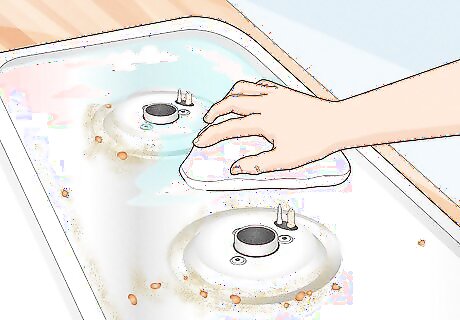
Wipe the stovetop down with warm soapy water and a clean cloth. Wet a cloth or sponge with warm water and apply a few drops of dish soap. Gently wipe the surface of your stovetop to remove any loose food or grease that’s sitting on the surface. Be sure to focus on the areas around the burner ports where buildup forms the most frequently. Be careful not to get anything inside of the burner ports once they’re uncovered so they don’t get clogged. Don’t forget to wipe the stove’s knobs and control panel because grease may have splattered on them while you were cooking. While many electric cooktops can lift up to expose a spill pan underneath that also requires cleaning, most gas stoves are not designed to open up easily
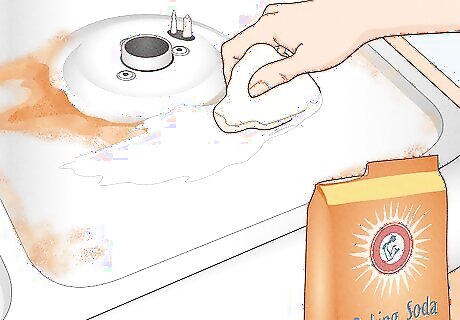
Clean up grease with a baking soda paste or degreaser. If there are stubborn food stains or stuck-on grease, mix a paste that’s half baking soda and half water. Apply the paste to your gas stovetop with a clean cloth and let it sit for about 20 minutes to help loosen the residue. Alternatively, spray a commercial degreaser onto the surface and let it sit for a few seconds. No matter which cleaner you use, wipe it up with a clean cloth when you’re finished. For additional cleaning power, sprinkle baking soda over a food stain and lay a wet cleaning cloth on top of it for 30 minutes before wiping it up.
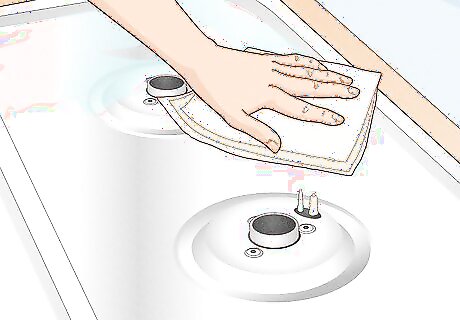
Rinse and dry your stovetop. Wet another clean cloth with water from your faucet and wring it out. Give your gas stove one more thorough wipe with the cloth to pick up any residue that’s still on the surface and remove leftover cleaner. Use paper towels or another cloth to dry off any excess water.
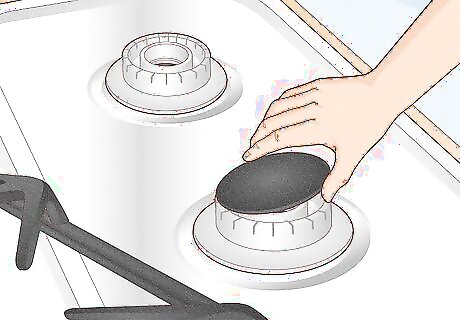
Reassemble the parts of your stove. Start by sliding the burner heads back on top of the matching ports so they sit firmly in place. Then, place the burner caps on top of the heads so they lay flat. Finally, place the grates back on top of the stove to finish cleaning. If you turn your burner on and it doesn’t light or has an uneven flame, turn it off right away and check that the burner cap isn’t crooked or clogged.
Removing Stuck-On Stains
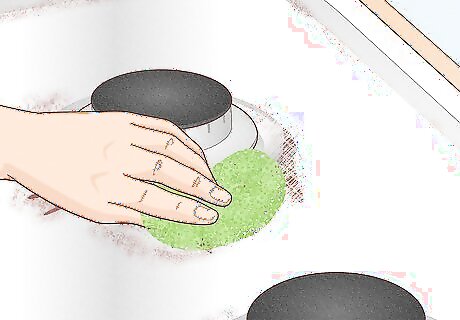
Scrape off stuck-on food with a plastic mesh pad. Wet a mesh pad with warm water and gently scrub your stovetop. Work the mesh pad in circular movements, and rewet it as needed until you’re able to lift off the residue that’s on the surface. Avoid using a razor blade or knife to scrape off food because you could damage or scratch the finish off of your cooktop.
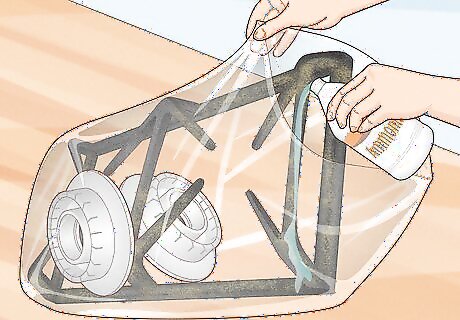
Seal grates in a bag with ammonia to break down stubborn stains. If you’re cleaning grates and burners that have a lot of buildup, put them all in a garbage bag or sealable container. Add about ⁄4 cup (59 ml) of ammonia to the bag and seal it tightly. Leave the pieces of your stove in the bag overnight so the ammonia breaks down the stains and residue. The following day, open the bag and clean the grates and burners with soapy water to remove everything. Ammonia fumes can cause eye and lung irritation, so work in a well-ventilated area. If you’re able to, store the bag with the grates and burners outside while using the ammonia. Dispose of the ammonia by diluting it with water and pouring it down your drain.
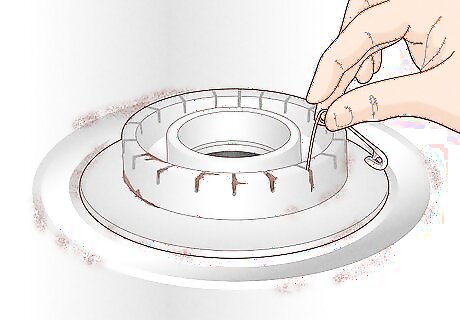
Dislodge residue on the burner holes with a safety pin. If you notice uneven flames around your burners, then the holes around the outside may be clogged with food residue. Take off the burner cap to expose the head underneath. Push the end of a safety pin into each of the holes along the top edge of the burner head to push out any food that’s stuck inside. This method works great for cleaning sealed burners that are attached to your gas stove and cannot be removed. If you don’t have a safety pin, then straighten out a paperclip and use it to poke into the burner holes. Avoid using toothpicks to clean your burner because they could break and get stuck inside the burner
Maintaining a Clean Stovetop
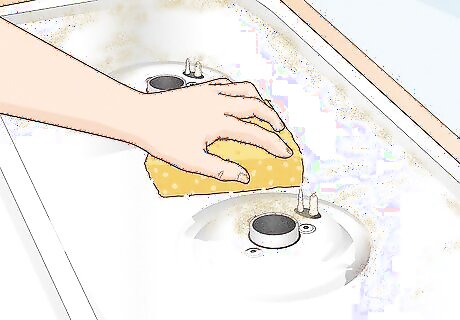
Wipe messes off of your stovetop after each use. If you spill food or grease on your stovetop while you’re cooking, wait for the burners and grates to cool down so you don’t burn yourself. Then, wipe up the mess with a cloth or paper towel that has some soapy water to clean it up before it hardens or leaves a stain.
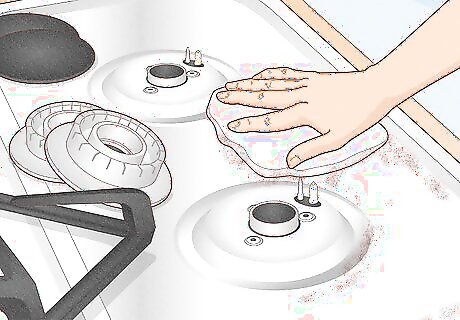
Clean your stove weekly to prevent staining and stuck-on food. Make it part of your regular routine when you’re cleaning your kitchen to focus on your stovetop. Take the grates and burner caps off and tackle any food stains on the cooktop that you missed when wiping up messes before. If the grates and burners are looking messy, then soak them as well. If the burners or grates don’t look too dirty, a quick wipe with soapy water will do the trick. Just be sure to soak and deep clean them about once a month.
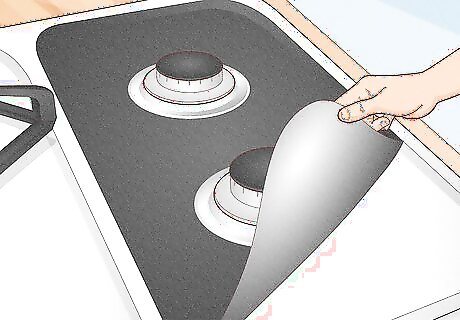
Put a stove protector under the grates to catch any spills. A stove protector is a thin cover that sits underneath the grates and around the burners to prevent food from getting on the cooktop. Remove the grates from your stove and place the protector down. Then, just set your grates back on top and start cooking without the risk of making a mess. If the holes in the protector don’t fit around the burners, cut them to size with a pair of scissors.












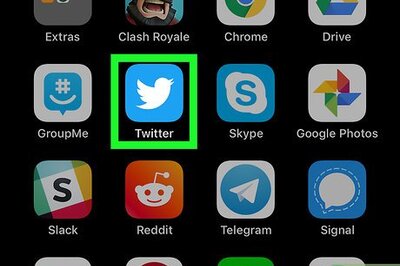





Comments
0 comment